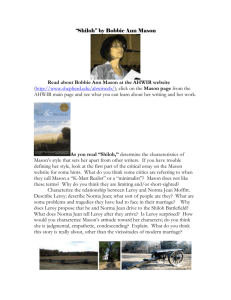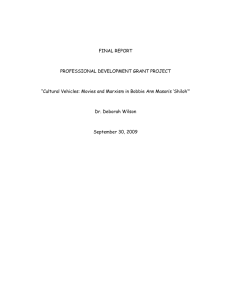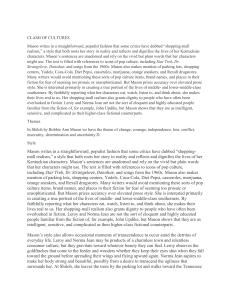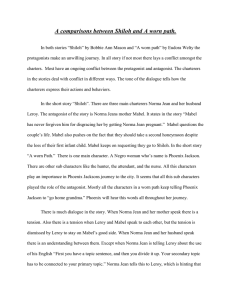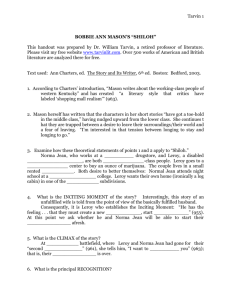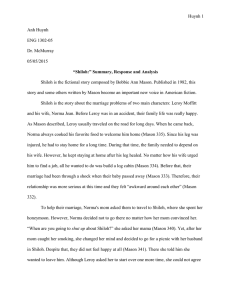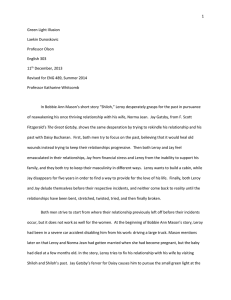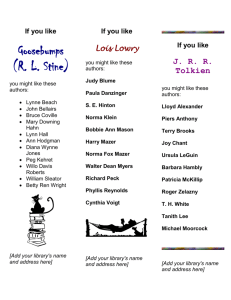Jen Pino Response 3 Shiloh 11/10/12 Response 3
advertisement
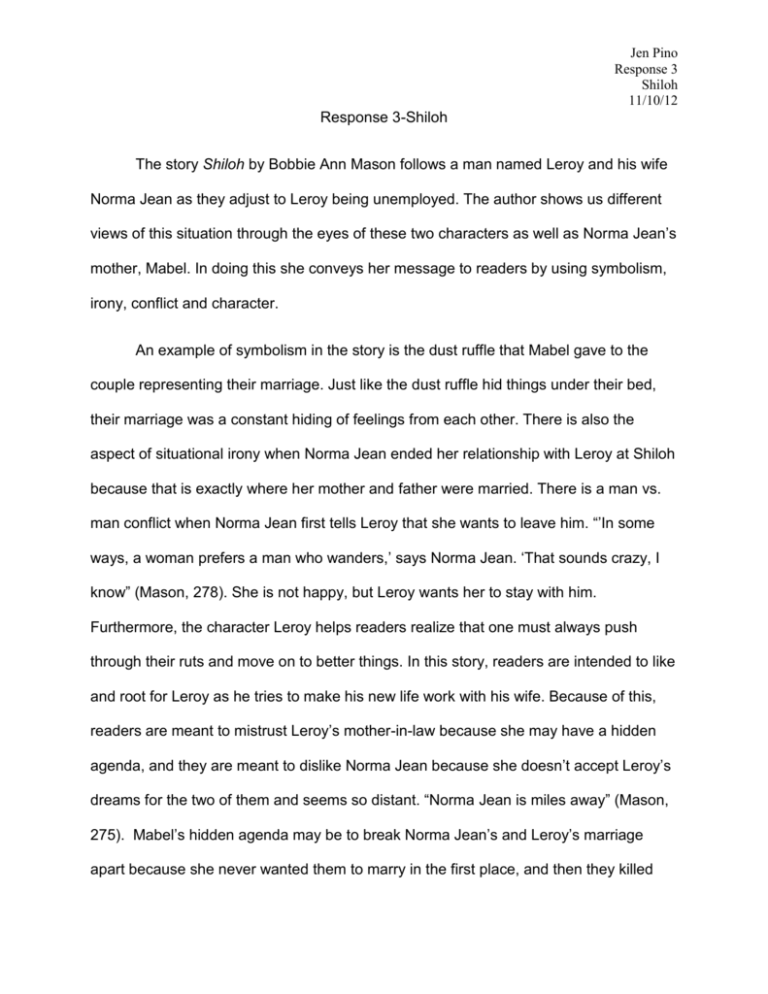
Jen Pino Response 3 Shiloh 11/10/12 Response 3-Shiloh The story Shiloh by Bobbie Ann Mason follows a man named Leroy and his wife Norma Jean as they adjust to Leroy being unemployed. The author shows us different views of this situation through the eyes of these two characters as well as Norma Jean’s mother, Mabel. In doing this she conveys her message to readers by using symbolism, irony, conflict and character. An example of symbolism in the story is the dust ruffle that Mabel gave to the couple representing their marriage. Just like the dust ruffle hid things under their bed, their marriage was a constant hiding of feelings from each other. There is also the aspect of situational irony when Norma Jean ended her relationship with Leroy at Shiloh because that is exactly where her mother and father were married. There is a man vs. man conflict when Norma Jean first tells Leroy that she wants to leave him. “’In some ways, a woman prefers a man who wanders,’ says Norma Jean. ‘That sounds crazy, I know” (Mason, 278). She is not happy, but Leroy wants her to stay with him. Furthermore, the character Leroy helps readers realize that one must always push through their ruts and move on to better things. In this story, readers are intended to like and root for Leroy as he tries to make his new life work with his wife. Because of this, readers are meant to mistrust Leroy’s mother-in-law because she may have a hidden agenda, and they are meant to dislike Norma Jean because she doesn’t accept Leroy’s dreams for the two of them and seems so distant. “Norma Jean is miles away” (Mason, 275). Mabel’s hidden agenda may be to break Norma Jean’s and Leroy’s marriage apart because she never wanted them to marry in the first place, and then they killed Jen Pino Response 3 Shiloh 11/10/12 her grandchild (in her mind). Leroy’s main conflict in the story is to get Norma Jean on board with his plans for a cabin and trying to bring her back into his life. Norma Jean’s main conflict is that she wants to move on with her life and go to school and get a good career, but feels like Leroy is holding her back. “’You could get a job as a guard at Union Carbide, where they’d let you set on a stool. You could get on at the lumberyard. You could do a little carpenter work, if you want to build so bad. You could--‘” (Mason, 270). Furthermore, Mabel’s main conflict is that she wants a better life for Norma Jean than she currently has. When Norma Jean breaks it off with Leroy, she resolves her own conflict because now she is free to do as she pleases. At the same time, she resolves Leroy and Mabel’s conflict in the sense that Leroy’s dreams have ended and Mabel can support her daughter in living a new and better life. The work has a pessimistic ending because it ends with the feeling of pain and confusion for Leroy. “The sky is unusually pale-the color of the dust ruffle Mabel made for their bed” (Mason, 279). Leroy realizes that their marriage was just a cover that was hiding a lot of unsaid feelings. Mason’s life is reflected in the work when Norma Jean begins so get very involved in her studies and writings. Mason loved to write and her education was superb. Two themes that are reflected in this work are that one has to really listen to one’s partner, and that actions can speak louder than words. Both were frequently talked about in this story. Mason repeatedly made it clear to readers that Norma Jean wanted no part in the log cabin and wanted Leroy to get a job and work. Leroy didn’t listen and/or didn’t take her seriously, which led to Norma Jean’s distancing from him. Furthermore, her actions engraved that feeling into the stone as well. As she stopped Jen Pino Response 3 Shiloh 11/10/12 playing piano and worked on bettering herself, she grew farther and farther away from Leroy. It is in this way, readers see that actions really do speak louder than words.
